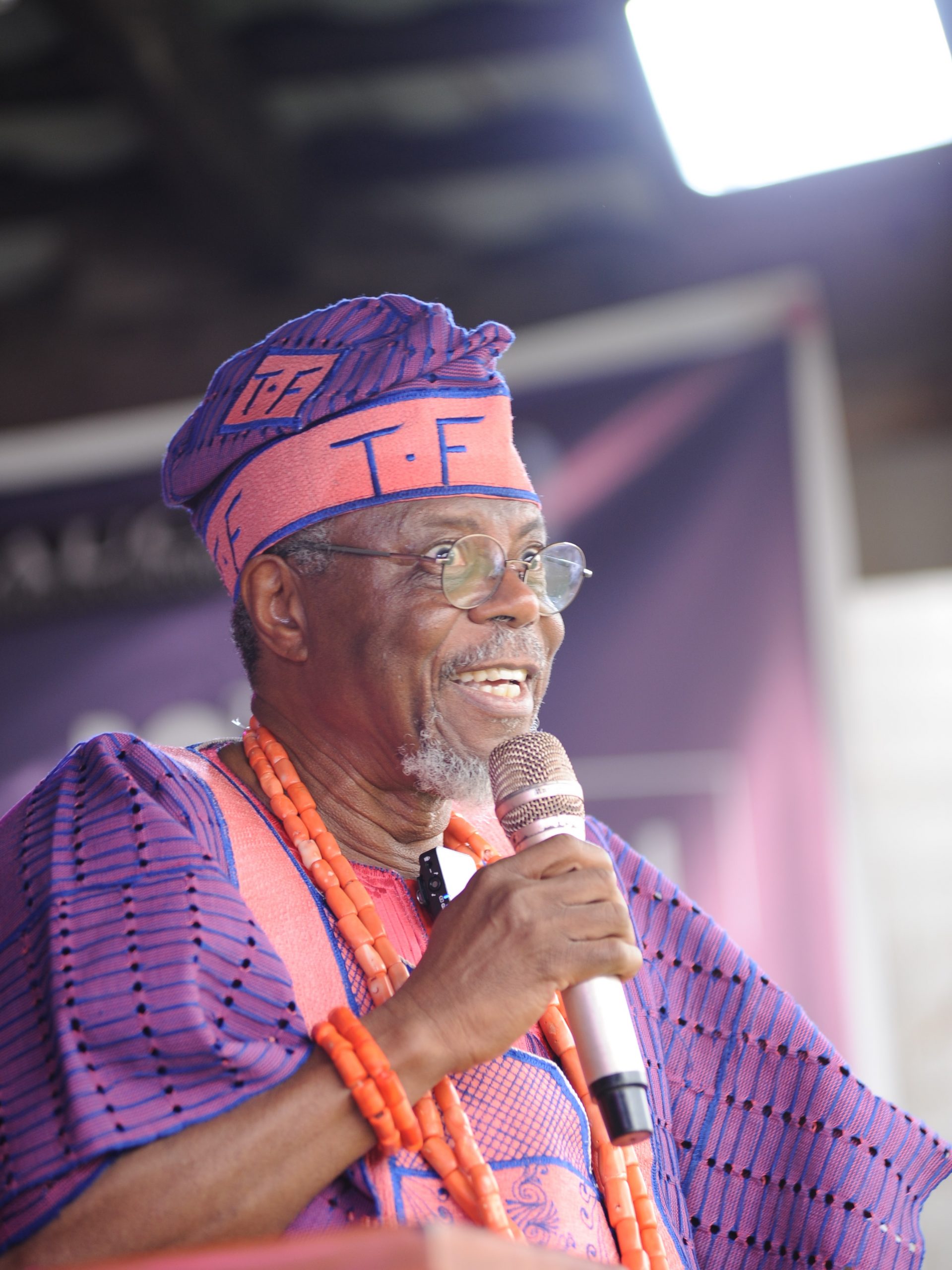By Toyin Falola
In a major exhibition that will close in a week, the recent creation of Moyo Okediji, a scholar-artist, enables us to focus on his unique contributions to African arts and culture. A nice report brings the exhibition to the public view:
I was privileged to visit this impressive exhibition.
Rather than focus on this one piece or its segment, I will cumulate some of Okediji’s writings and images into a brief analysis.

On one gentle night in 2007, I was seated on a couch as the radio broadcast “Ikoko Akufo” by Beautiful Nubia (https://www.youtube.com/watch?v=DaNQq02N7e). While the song mourns the plight of an African woman, the title reminded me of Moyo Okediji’s The Shattered Gourd, a book that embraces the complexities and dynamism of culture from the perspective that syncretism and cultural exchange aid rapid development. The book examines African culture, with a specific focus on the Yoruba and Western society. Okediji, as an inquisitive scholar, dug deep into the cultures of America and Nigeria until he discovered a nexus. However, it should be noted that his subjectivity may be read to mean that African culture, relocated, must be reimagined.
In this book, he endeavored to rewrite the portrayal of African culture as a misrepresented entity. In his defense, he believes the African culture has been incorporated into the Western culture due to the presence and persistence of persons of African roots in America. Even today in music, there have been several collaborations between Afrobeats artists, who portray the African culture through their music, style, and lyrics, and the American RnB, pop, and rock stars. The most recent is a Davido and Chris Brown collaboration. These artists often sing the reality of Africans, Americans, or African Americans. This is an assurance that the future holds endless possibilities for the Atlantic cultures.
For example, “The Dutchman,” a painting by Moyo Okediji, reflects the experiences of the Black community, particularly the African Americans. The artwork reveals the ongoing battles faced by this community, which has survived the horrors of American slavery and systemic racism. The artwork depicts the historical trauma experienced by African American communities as well as the effects of the transatlantic slave trade on them. The trauma suffered by this community extends beyond the slave trade to include experiences of racism as well as marginalization and oppression. The painting is also a celebration of resilience and the strength of African and African-American communities in the face of persistent adversity.
According to findings and recent happenings, those who assert that African culture has no place in the West are misguided, as several pieces of evidence contradict this claim. Although many present a doctored narrative that Africa is uncivilized and barbaric, Okediji critiques the status quo and argues against the marginalization and underestimation of African culture and identity. With a view to changing the narrative that African culture is basic and outdated, the book reflects the unique ways in which African art contributes to national and international development.
If there were an award for scholars recognized for their contributions to and passion for Yoruba art, Okediji would undoubtedly be a recipient. He has dedicated his life to being an art historian and artist, enabling him to investigate and showcase the profound aspects of Yoruba culture. His exaltation of the culture traces back to the formation of the “Ona” movement in the late 1980s. This movement signified a cultural shift and advancement within the Yoruba community by depicting Yoruba culture, including adages and proverbs, through visual arts. As the saying goes, to see is to believe; these artworks portray Yoruba culture and sayings in light of current realities.
Okediji’s creative approach distinguishes itself as a special fusion of modernism and tradition. Often looking at Yoruba mythology, cosmology, philosophy, and identity, Okediji has been safeguarding and promoting Yoruba civilization through his paintings and installations. Numerous instances of Okediji’s works are profoundly entrenched in Yoruba culture and have been instrumental in its promotion and development.
Okediji’s creativity and inventiveness include a vivid examination of Oya mythology. Oya is recognized as the Yoruba goddess of storms and change. Okediji has utilized his craft to illustrate the dynamic energy of Oya, which is a symbol of transformation and renewal. Moreover, he is known for his vibrant understanding of Ifa, thereby drawing much of his inspiration from the Yoruba divination system. Okediji always reflects on the importance of Ifa and its impact on people’s lives.
During one of his public lectures, Professor Okediji explored Yoruba images as a repository of oral art that is perceived visually, as well as the Yoruba language as an embodiment of visual expressions that are articulated through sound. Okediji’s artistic interactions with Yoruba individuals, including artists, trauma survivors, and diviners, who communicate through their gaze and articulate words through their gestures, brought this concept to life.
Okediji’s African Renaissance: Old Forms, New Images in Yoruba Art offers a thorough overview of the works of modern Yoruba who have injected innovative ideas into the Yoruba community, therefore underlining the need for continuity in the present age. This is clear in the recent reinterpretation and adaptation of classic art forms in contemporary settings as well as in the prominent representation of the inventiveness and creativity that accompany Okediji’s works as a painter and artist who finds solace in presenting his culture and traditions in a fresh perspective. His ongoing exhibition contributes to art, showcasing how our history affects the present and also illuminates the future of our culture.


